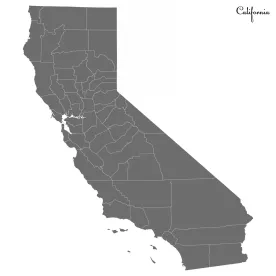As we previously reported, on June 9, 2021, the California Occupational Safety and Health (“Cal/OSHA”) Standards Board (“the Board”) withdrew its prior proposed revisions to the Division of Occupational Safety and Health’s (Cal/OSHA) COVID-19 Emergency Temporary Standards (“ETS”), effectively returning to the original ETS approved in November 2020. A week later, however, on June 17, 2021, the Board approved revisions to the ETS (“Revised ETS”) which, among other things, align with current guidance from the California Department of Public Health (“CDPH”) and Centers for Disease Control and Prevention (“CDC”) with respect to physical distancing and the use of face coverings for vaccinated individuals.
An executive order, signed by Governor Newsom shortly after approval of the Revised ETS, allowed the regulations to go into effect immediately, bypassing the usual 10-day approval period by the Office of Administrative Law.
The Revised ETS apply to all employees and places of employment except for (1) workplaces with only one employee who does not have contact with others; (2) employees working from home; and (3) employees covered by the Aerosol Transmissible Diseases (ATD) regulation.
So, What’s New, and What’s Not?
Under the Revised ETS, employers must still, among other requirements, (i) maintain an effective written COVID-19 Prevention Program, (ii) provide employees with COVID-19 training; (iii) provide pay continuation to employees who are excluded from the workplace due to COVID-19 (with some exceptions); (iv) continue daily screening protocols; (v) continue cleaning protocols (with some modifications); and (vi) follow statutory law and mandatory guidance regarding tracing, tracking and response efforts to any COVID-19 cases or outbreaks in the workplace.
A number of prior requirements and restrictions, however, have been eased. Important changes in the Revised ETS include the following:
-
Fully vaccinated employees do not need to wear face coverings in the workplace (unless there is an outbreak), but may choose to do so and employers must provide face masks upon request.
-
Fully vaccinated employees and employees who are tested at least weekly no longer need to follow physical distancing guidelines.
-
Employees who are not fully vaccinated must still wear face coverings while indoors or in vehicles, subject to certain limited exceptions; physical distancing, however, is only required indoors and when the employee is not wearing a face covering.
-
Employers must provide respirators (e.g., N95 mask) upon request for voluntary use to all employees who are not fully vaccinated and who are working indoors or in vehicles with more than one person, irrespective of the vaccination status of the other person(s) in the office or vehicle (Cal/OSHA has indicated that a training video on respirator use and fitting is forthcoming);
-
No physical distancing or barrier requirements regardless of employee vaccination status, except during an outbreak (defined as 3 or more cases in an exposed group of employees within a 14-day period) or major outbreak (defined as 20 or more cases in an exposed group of employees within a 30-day period). For purposes of identifying an outbreak or major outbreak, cases are limited to those among employees at the worksite.
-
Employers must offer COVID-19 testing at no cost to employees during paid working time to: unvaccinated employees who have COVID-19 symptoms or have had close contact with a COVID-19 case at work; symptomatic vaccinated employees who had close contact with a COVID-19 case at work; and all employees in the case of a major outbreak at work.
-
COVID-19 testing during an outbreak requires immediate testing of unvaccinated, exposed employees and then again one week later; and thereafter, employers must make COVID-19 testing available once a week to all exposed employees in who remain until the outbreak concludes. Testing is not required for fully vaccinated exposed employees.
-
The required quarantine period following close contact with a COVID-19 case will not apply to employees (i) who are fully vaccinated and asymptomatic or (ii) who have recovered from COVID-19 within the last 90 days.
Documentation of “Fully Vaccinated” Employees
In order to take advantage of the less strict provisions relating to fully vaccinated employees, an employer must have documentation of an employee’s vaccination status based on the new definition of “fully vaccinated.” An employer may opt to treat all employees as unvaccinated instead of having a documentation process. Cal/OSHA has issued FAQs, which outline the following acceptable options to document vaccination status:
-
Employees provide proof of vaccination (vaccine card, image of vaccine card or health care document showing vaccination status) and employer maintains a copy.
-
Employees provide proof of vaccination. The employer maintains a record of the employees who presented proof, but not the vaccine record itself.
-
Employees self-attest to vaccination status and employer maintains a record of who self-attests.
According to Cal/OSHA FAQs, employers are not required to inquire as to an employee’s vaccination status. If an employee’s vaccination status is unknown, the employer must treat the employee as unvaccinated.
What This Means for Employers
California employers covered by the Revised ETS are strongly encouraged to:
-
Review their COVID-19 safety protocols and decide what works best for their workplaces, keeping in mind that employers are permitted, but not required, to make exceptions for fully vaccinated employees;
-
Revise their written COVID-19 Prevention Plans to reflect any changes they have made (an updated model plan from Cal/OSHA is anticipated); and
-
Update COVID-19 safety trainings, to incorporate the changes in the Revised ETS, particularly for fully vaccinated individuals.
Additional Resources: Cal/OSHA has issued FAQs and guidance titled What Employers Need to Know About the Recommended Revisions to provide further guidance on the revised ETS.



 />i
/>i
